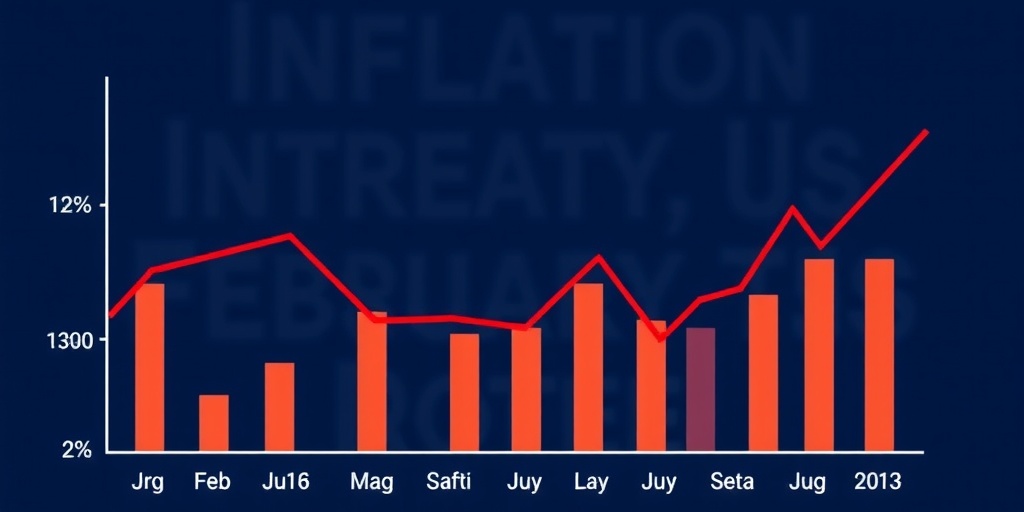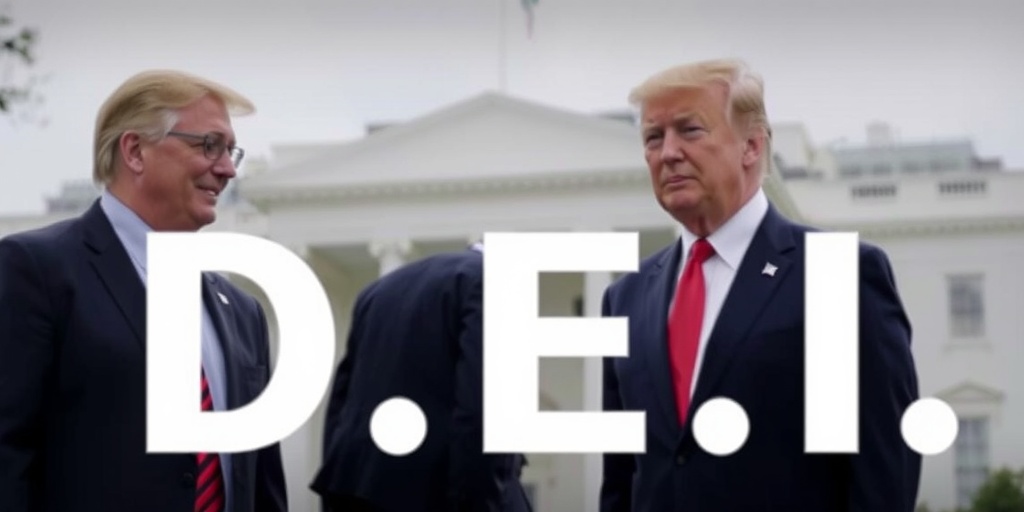Now Reading: U.S. Inflation Drops More Than Anticipated in February
-
01
U.S. Inflation Drops More Than Anticipated in February
U.S. Inflation Drops More Than Anticipated in February

Inflation Trends and the Federal Reserve’s Response Amid Economic Uncertainty
February brought a significant easing of inflation, a development that bodes well for the Federal Reserve as it navigates the complexities created by President Trump’s trade policies, which threaten both price stability and economic growth. The Consumer Price Index (CPI) showcased a more moderate increase of 2.8% year-on-year, following a monthly rise of just 0.2%. This figure marked a decrease from January’s unexpectedly high 0.5% monthly increase, falling short of economists’ forecasts.
In addition to the overall CPI, the core inflation measurement—excluding the often volatile categories of food and fuel—also indicated a decline. The core CPI climbed by 0.2% month-on-month, or 3.1% on an annual basis, again reflecting a deceleration compared to January’s data.
According to data from the Bureau of Labor Statistics, the progress toward the Federal Reserve’s target inflation rate of 2% remains uneven. While staple goods, particularly grocery items like eggs, have seen steep price hikes due to ongoing supply disruptions from avian influenza, other sectors, notably gasoline, have experienced price drops. A notable 4% decline in airfare costs during February significantly contributed to the overall better-than-expected inflation data.
Food items have not been immune to price increases, with egg prices surging by an additional 10.4% in February. To put this into perspective, prices for eggs are nearly 60% higher than they were last year. Overall food prices edged up by 0.2% this month, reflecting a 2.8% increase from February of the previous year. The used car market remained dynamic, with an uptick of 0.9%, while new vehicle prices saw a slight dip. Car insurance, which had been a major factor in January’s inflation rise, increased again but at a more subdued rate of 0.3%, representing a total annual increase of just over 11%.
Rental costs grew more modestly, showing the smallest annual gain since December 2021, with the shelter index climbing 4.2%. Between January and February alone, shelter costs rose by 0.3%.
As the Federal Reserve contemplates its next steps, all eyes are on potential ramifications stemming from President Trump’s tariffs. The critical question revolves around when these tariffs will begin to exert downward pressure on consumer prices. Trump praised the inflation figures from February, branding them “very good news.” However, analysts caution that the immediate effects of tariffs were not discernible in the CPI data for February, suggesting the full impact may unfold over the coming months.
Ryan Sweet, the chief U.S. economist at Oxford Economics, noted that the initial 10% tariffs imposed on Chinese imports had yet to significantly influence inflation in categories like apparel, furniture, and electronics. He anticipates that the elevated tariffs, recently doubled, along with additional duties imposed by the Trump administration, will likely drive up consumer prices in future reports.
Peter Tchir, head of macro strategy at Academy Securities, predicts that the most considerable impact on prices will materialize if Trump enacts reciprocal tariffs against other nations. This could lead to increased costs for American consumers relying on imports. Regardless of tariff implications, Tchir expresses concern about the economy’s trajectory, given current inflationary pressures coupled with a slowdown in growth, calling the situation a “real growth scare.”
Amid these uncertainties, consumer sentiment appears to be deteriorating. A recent survey from the Federal Reserve Bank of New York reveals that consumer expectations about their financial situations in the next year have worsened markedly. Those anticipating a decline in their financial standing rose to the highest level since November 2023, alongside an increased perceived likelihood of missing future debt payments—a concern not seen since April 2020.
These complex dynamics present a challenging environment for the Federal Reserve. The dual mandate of fostering stable inflation while maintaining a healthy labor market becomes increasingly difficult in light of these recent developments. In January, Fed officials had justified the decision to refrain from further interest rate cuts based on the resilience of the economy. However, should evidence of weakening come to light before inflation is under control, the Fed’s options may become constrained.
Historically, during Trump’s previous tenure, the Fed reacted to trade war dynamics by enacting three rate cuts in 2019 to bolster the economy. Fed Chair Jerome Powell, in his remarks, acknowledged the unique challenges presented by the current economic backdrop, decoupling it from previous scenarios where inflation levels were high yet manageable. He emphasized that the Fed’s standard approach would be to "look through" temporary inflation spikes while remaining vigilant for persistent shocks, maintaining clarity in an evolving outlook.
Market participants are currently placing bets on the Fed’s ability to implement three rate cuts within the year, each by a quarter point. This adjustment reflects growing trepidation about ongoing economic conditions. As the Federal Reserve prepares for its next meeting, indications suggest they are likely to maintain the current interest rate band of 4.25% to 4.5%. The interplay between inflation trends, economic growth narratives, and policy responses will undoubtedly shape the economic landscape in the coming months.
Stay Informed With the Latest & Most Important News
Previous Post
Next Post
-
 01New technology breakthrough has everyone talking right now
01New technology breakthrough has everyone talking right now -
 02Unbelievable life hack everyone needs to try today
02Unbelievable life hack everyone needs to try today -
 03Fascinating discovery found buried deep beneath the ocean
03Fascinating discovery found buried deep beneath the ocean -
 04Man invents genius device that solves everyday problems
04Man invents genius device that solves everyday problems -
 05Shocking discovery that changes what we know forever
05Shocking discovery that changes what we know forever -
 06Internet goes wild over celebrity’s unexpected fashion choice
06Internet goes wild over celebrity’s unexpected fashion choice -
 07Rare animal sighting stuns scientists and wildlife lovers
07Rare animal sighting stuns scientists and wildlife lovers





















